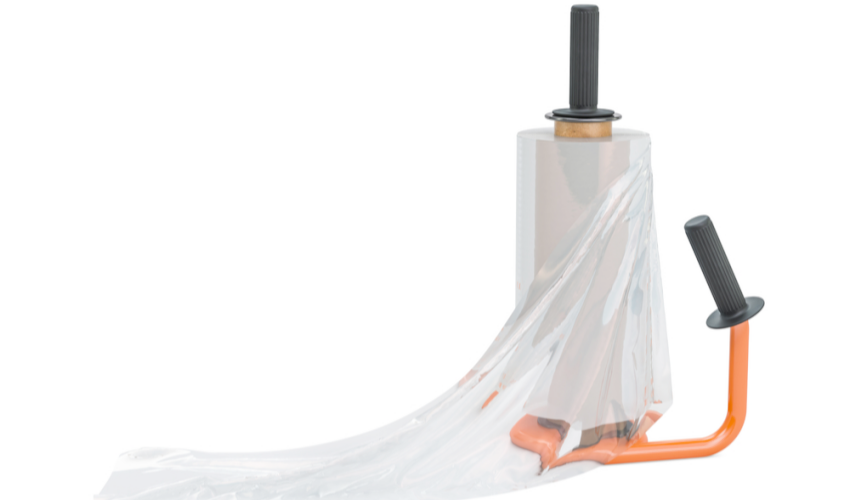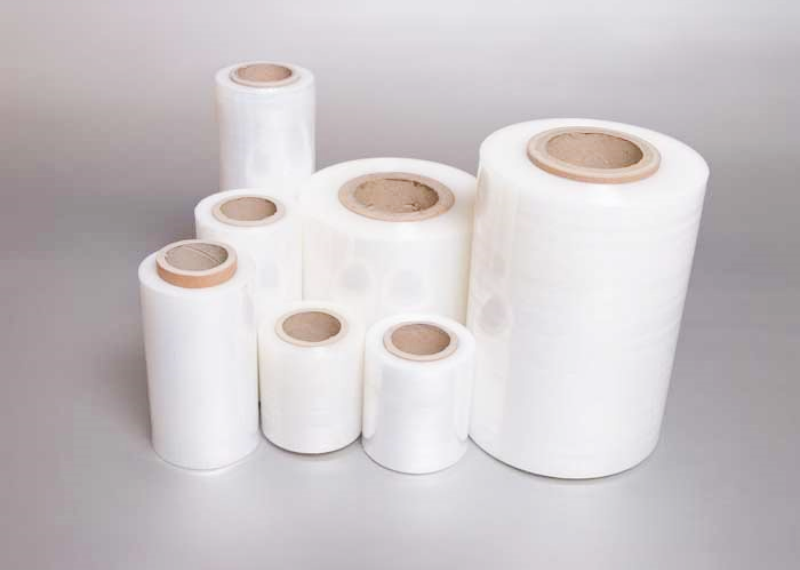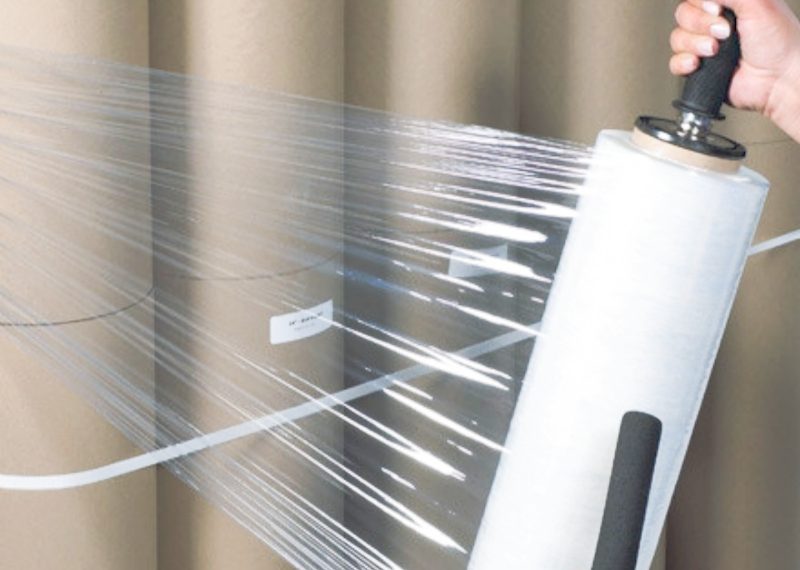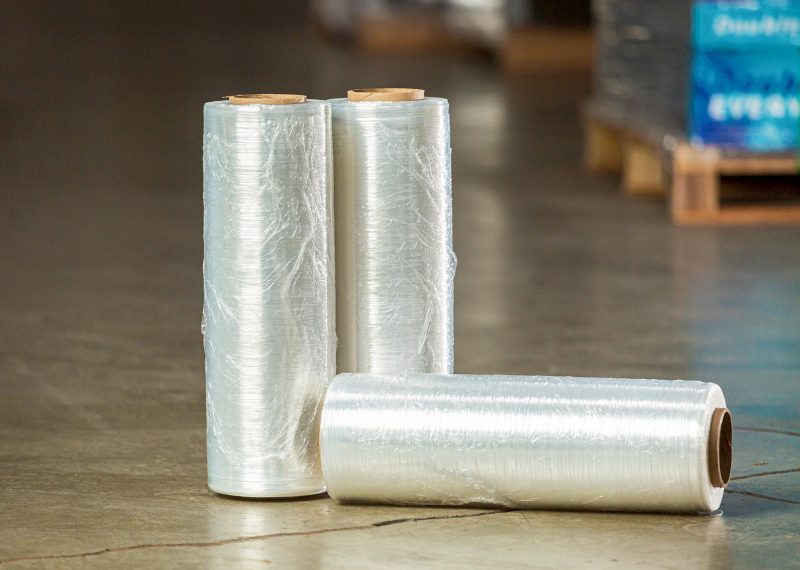
Pliant stretch film is a versatile packaging solution widely used in various industries for securing and stabilizing products during storage and transportation. Pliant Stretch Film is a thinner-gauge, high-performance film used with high-speed automated wrapping equipment. This stretch film provides an effective barrier against moisture, dust, and other contaminants, making it ideal for both heavy and lightweight items. Its exceptional stretchability and strength enable efficient load containment, which is crucial in logistics and warehousing. Choosing the right type of stretch film is essential, as it impacts operational efficiency, product safety, and cost-effectiveness. By understanding the unique features of pliant stretch film, businesses can optimize their packaging processes and ensure that their products arrive in excellent condition.
Why Choose Our Stretch Film Over Competitors?

| Attribute | Description |
|---|---|
| Type | Pliant Stretch Film |
| Material | LLDPE, PE, Transparent Mesh |
| Brand Name | PWP Stretch Film |
| Place of Origin | Fujian, China |
| Thickness | 8 mic - 50 mic, Customizable |
| Width | 10cm - 50cm, Customizable |
| Length | 50m - 2140m, Customizable |
| Stretch Rate | ≥400% |
| Hardness | Soft |
| Processing Type | Casting, Multiple Extrusion |
| Adhesive Type | Acrylic, Hot Melt, Pressure Sensitive, Water Activated |
| Features | Moisture-Proof, Waterproof, High Gloss, Durable, High Temperature Resistant, Flexible, Durable, Environmentally Friendly, Easy to Use |
| Applications | Packaging, Industrial Use, Pallet Wrapping, Cargo and Luggage Protection |
| Surface | Smooth, Glossy, Plain |
| Customization Options | Logo Printing, Color, Width, Length |
| Tensile Strength | 0.0 - 50.0 MPa |
| Certificates | ROHS, ISO:9001, MSDS, ROHS6 |
| MOQ | 500kg |
| Delivery Time | Within 20 Days |
| Payment Options | L/C, T/T |
Pliant stretch film is a type of flexible plastic film made primarily from linear low-density polyethylene (LLDPE). This packaging solution is designed to stretch around products, providing a tight and secure load stability pallet wrap that stabilizes loads during storage and transit. Pliant stretch film is commonly used in warehouses, manufacturing facilities, and distribution centers due to its ability to protect goods from dust, moisture, and other environmental factors while maintaining stability.
Pliant stretch film stands out from other types of stretch films due to several unique features:
These characteristics make pliant stretch film a preferred choice for businesses seeking reliable packaging solutions.
The size of pliant stretch film refers to its physical dimensions, typically measured by width, length, and thickness. These specifications are critical for selecting the appropriate stretch film for various packaging needs. Here’s a detailed breakdown:
The width of pliant stretch film is the measurement across the film’s roll from one edge to the other. Common widths include:
The width you choose depends on the dimensions of the product or pallet you’re wrapping. Wider films are typically used for large, stable loads, while narrower films suit smaller or irregularly shaped items.
The length refers to how much film is wound onto the roll. Length can vary significantly and is typically categorized as:
Longer rolls reduce the need for frequent roll changes, improving efficiency for high-volume operations.
Thickness, also referred to as gauge or microns, determines the film’s durability and stretch capacity. Common thicknesses include:
Thickness affects the film’s performance. Thicker films offer higher puncture resistance and load stability, while thinner films are more cost-effective and eco-friendly for lighter applications.
Many manufacturers provide custom sizes to meet specific needs. For instance:
Choosing the correct size is essential for:
By understanding the size specifications of pliant stretch film, businesses can enhance packaging performance while minimizing costs and environmental impact.

Pliant stretch film offers numerous advantages that make it an ideal choice for businesses looking to enhance their packaging processes. Below are some key benefits that distinguish pliant stretch film from traditional films:
Pliant stretch film is engineered for enhanced durability and strength, providing several benefits:
The design of pliant stretch film allows for greater efficiency in packaging operations:
Pliant stretch film also contributes to sustainability efforts in packaging:
The advantages of pliant stretch film—such as its durability, increased roll yield, and environmental benefits—make it a smart choice for a wide range of applications. Companies that adopt this packaging solution can enhance their operational efficiency while contributing positively to sustainability initiatives.

Pliant stretch film is a versatile packaging solution that finds extensive use across various industries. Its unique properties make it suitable for securing and stabilizing a wide range of products, ensuring safe transport and storage. Below are some key industries and specific applications where pliant stretch film excels.
Pliant stretch film is widely utilized in several sectors, including:
Pliant stretch film is effective in various applications, demonstrating its adaptability and reliability:
Beyond these primary uses, pliant stretch film also serves in various specialized applications:
The applications of pliant stretch film span multiple industries, from logistics to retail. Its ability to secure, stabilize, and protect products makes it an invaluable tool in ensuring the safe transport and storage of goods. By leveraging the benefits of pliant stretch film, businesses can enhance their operational efficiency and product safety.

Fortitude stretch film is a specialized type of stretch film designed for enhanced performance in demanding packaging applications. It is engineered to provide exceptional strength and durability, making it an ideal choice for various industries that require secure and reliable packaging solutions.
Fortitude stretch film is characterized by its robust composition, which allows it to handle heavy loads and withstand the rigors of transportation. Some key features include:
When comparing fortitude stretch film with pliant stretch film, several unique benefits of fortitude stretch film emerge:
Fortitude stretch film stands out as a high-performance alternative to pliant stretch film, particularly for heavy-duty packaging needs. Its unique benefits make it a valuable option for businesses seeking reliable and effective wrapping solutions, ensuring that products remain secure and intact throughout the shipping wrap and storage process.
Selecting the right pliant stretch film is crucial for ensuring optimal performance in packaging applications. The choice of film can impact load stability, product protection, and overall efficiency. Below are key factors to consider when making your selection:
When choosing pliant stretch film, it can be beneficial to compare it with other types of stretch wrap films and food cling wraps. Below is a comparison table highlighting key differences:
| Feature | Pliant Stretch Film | Other Stretch Films | Food Cling Wrap |
|---|---|---|---|
| Thickness Options | Wide range available | Varies by manufacturer | Generally thinner |
| Cling Properties | Excellent cling | Varies | High cling for food |
| Durability | High durability for loads | Varies widely | Less durable |
| Application Method | Manual or machine | Primarily machine-grade | Manual only |
| Primary Use | Industrial packaging | Industrial and commercial | Food storage and preservation |
Choosing the right pliant stretch film involves careful consideration of various factors, including load specifications, environmental conditions, and application methods. Understanding how pliant stretch film compares to other types of films and food cling wraps can help you make informed decisions, ensuring that your packaging needs are met effectively and efficiently. By selecting the appropriate film, businesses can enhance their packaging processes, reduce waste, and improve overall operational efficiency.
The capacity of pliant stretch film refers to its performance characteristics, including its ability to stretch, secure, and protect loads during storage or transportation. This capacity is influenced by several factors such as stretchability, load weight, puncture resistance, and cling properties. Below is a detailed exploration of pliant stretch film’s capacity:
Modern pliant stretch films are designed with sustainability in mind:
| Capacity | Typical Range | Factors Influencing Capacity |
|---|---|---|
| Stretchability | 150%–300% | Film type, material quality |
| Load Weight Capacity | Up to 3,000 lbs (1,361 kg) | Thickness, load type, pallet configuration |
| Puncture Resistance | High for reinforced films | Multi-layer designs, material composition |
| UV/Weather Resistance | Optional | UV-stabilized additives |
By evaluating these capacities, businesses can select the right pliant stretch film to optimize load security, reduce material usage, and ensure smooth operations in various environments.
Cling film and stretch film are both used for wrapping and securing items, but they serve different purposes and have distinct characteristics. Cling film, often referred to as plastic wrap, is primarily designed for food preservation. It is thin, flexible, and has a self-adhesive quality that allows it to cling tightly to surfaces, creating an airtight seal. This makes it ideal for wrapping food items to prevent moisture loss and spoilage.
In contrast, stretch film, also known as pallet wrap, is thicker and stronger, making it suitable for industrial and commercial applications. It is primarily used to secure and stabilize loads on pallets during transportation and storage. Stretch film can stretch up to several times its original length, providing excellent load stability without the need for adhesives. While cling film is mainly used in kitchens, stretch film is commonly found in warehouses and shipping facilities.
Stretch film is a versatile packaging material primarily used to secure and stabilize loads during storage and transportation. Its primary function is to wrap around products and pallets to keep them intact, preventing shifting and damage during handling. The film’s elasticity allows it to stretch tightly around the items, creating a secure hold that minimizes the risk of products becoming dislodged.
In addition to providing stability, stretch film also offers protection against dust, dirt, and moisture, which can be particularly important in industrial settings. It is commonly used in logistics and warehousing for various applications, including bundling products, securing pallets, and even protecting items during shipping. Some stretch films are designed with specific features, such as UV protection or puncture resistance, making them suitable for different environments and needs. Overall, stretch film enhances efficiency in packaging and reduces the likelihood of damage during transport.
The strength of stretch film varies depending on its thickness, material composition, and specific type. Generally, stretch film is designed to be durable and can handle significant weight and stress. It is made from high-quality polyethylene, which contributes to its tensile strength and stretchability. Most stretch films come in various gauges, ranging from 50 to 120 gauge, with thicker films offering greater strength and load-bearing capabilities.
When properly applied, stretch film can secure loads weighing several thousand pounds, making it a reliable choice for industrial applications. The strength of the film also ensures that it resists punctures and tears, providing additional protection during transportation. Some specialized stretch films may include additional features, such as enhanced cling properties or resistance to extreme temperatures, further improving their strength and functionality. Therefore, choosing the right gauge and type of stretch film is crucial for meeting the specific needs of your packaging and shipping requirements.
The longevity of stretch wrap depends on its environment and application. When stored properly in a cool, dry place, away from direct sunlight and extreme temperatures, stretch wrap can last for up to 12 to 18 months. After this period, its elasticity and strength may begin to degrade, making it less effective. If exposed to UV light or high humidity, the material may break down faster. In use, stretch wrap typically serves as a short-term solution for securing loads during transport or storage, with a functional life lasting until the wrap is removed. Proper handling and storage conditions significantly affect its shelf life and usability.
Stretch film is widely used in industrial, commercial, and domestic applications. Its primary purpose is to secure products on pallets for storage or transportation, ensuring stability and protection. Industries like manufacturing, food and beverage, pharmaceuticals, and e-commerce frequently use stretch film for packaging goods. It is also used to bundle smaller items, cover furniture during moves, and protect goods from dust, moisture, and tampering. Specialized films, such as UV-resistant stretch film, are employed for outdoor storage, while food-grade versions are used for wrapping perishables. Its versatility makes it a staple in packaging and logistics.
Stretch film has a shelf life of about 12 to 18 months under ideal storage conditions—cool, dry, and away from direct sunlight. Over time, the film may lose elasticity, become brittle, or develop uneven stretch properties. Storing it at temperatures between 15°C and 25°C (59°F to 77°F) and avoiding exposure to UV light and high humidity can help preserve its quality. Regular inspection of stored rolls ensures their effectiveness before use. Beyond its shelf life, stretch film may still function but with reduced performance, risking breakage or compromised load security.
Stretch film strength depends on its thickness, material, and manufacturing type. Typically made from linear low-density polyethylene (LLDPE), it can stretch up to 300% of its original length while maintaining durability. Films with higher gauges (thicker films) offer greater strength and are better suited for heavy or sharp-edged loads. Standard stretch films can secure loads ranging from 500 to 2,000 pounds. Advanced formulations, such as high-performance or reinforced films, provide enhanced tear resistance and puncture strength, making them suitable for demanding applications.
Blown film refers to the production method where molten plastic is extruded into a bubble and cooled with air, creating a durable film with excellent strength and puncture resistance. It is used for applications requiring high durability. Stretch film, on the other hand, refers to a packaging material designed to stretch and secure items, typically made using cast or blown methods. Cast stretch film offers clarity and quiet unwinding, while blown stretch film provides greater durability but with a noisier application. Both types serve distinct purposes in packaging and logistics.
Stretch hood and stretch film are both used for load securing but differ in application and design. Stretch hood is a tubular film applied to a palletized load using automated machines, shrinking to fit the load tightly, offering superior protection against dust, moisture, and UV rays. Stretch film, however, is manually or mechanically wrapped around loads to secure them. While stretch film is versatile and cost-effective for various applications, stretch hood provides a more stable and weather-resistant solution, ideal for high-volume operations or outdoor storage.

My name is James Thompson, and I’m the editor of this website dedicated to Stretch Film, Pallet Wrap, and Stretch Wrap products.
My passion for packaging began when I noticed the challenges companies face in securing their products efficiently for transportation and storage. This inspired me to delve deep into the world of stretch films and pallet wraps, exploring the latest technologies and best practices.
I aim to provide valuable insights, practical tips, and up-to-date industry trends to assist you in making informed decisions. Whether you’re a small business owner or part of a large corporation, my goal is to support you in optimizing your operations and ensuring your products reach their destination safely.
Thank you for visiting, and I look forward to accompanying you on your journey toward better packaging solutions.
Comments are closed